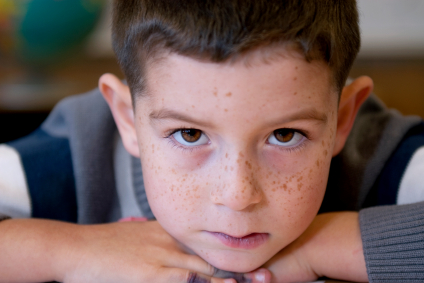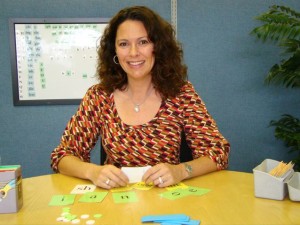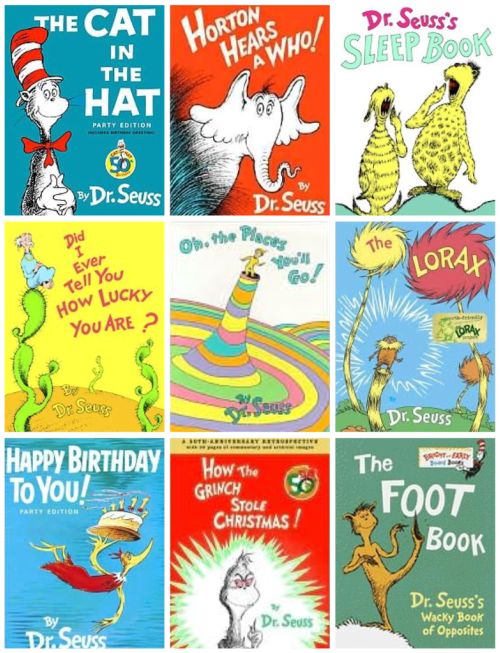
by PRIDE Reading Program Admin | Feb 18, 2014 | A PRIDE Post, Dyslexia
Because dyslexia is primarily associated with difficulty in learning to read, it cannot be reliably diagnosed until your child is the age at which reading typically begins. For most children this happens around the age of six. The following are some common characteristics that may be signs of dyslexia in preschool-age children:
- Jumbling sounds of words in speech, such as saying “pasgetti” for spaghetti” or “mawn lower” for lawn mover.”
- Confusing words signifying direction in space or time, such as “up” and “down,” “in” and “out,” “yesterday” and “tomorrow.”
- Forgetting or confusing the word for known objects, such as “table” or “chair.”
- Delayed speech development.
- Unusual speech patterns, such as frequent hesitations or stammering.
- Difficulty with learning.
- Difficulty remembering and following directions.
- Difficulty learning nursery rhymes and rhyming words.
- Difficulty in learning (and remembering) names of letters.
- Enjoys being read to but shows no interest in letters or words.
- Difficulty with clapping a simple rhythm.
In most cases you will probably not be aware that your child has dyslexia until he is in first or second grade. When reading instruction begins in earnest, your child is likely to lag behind and will begin to show signs of frustration at school. After several months, you may realize that your child simply hasn’t caught on to reading in the same way as his peers. He may still have difficulty recognizing letters of the alphabet, or he may know the letters and their sounds but seem unable to put them together to form even simple words. You may notice that he seems unable to remember words that he has seen before and struggles to sound out every word he sees.
The surest sign of dyslexia is simply the fact that your child seems bright and capable at home and at play, yet he struggles with reading, writing, and spelling. School-aged children with dyslexia will exhibit many of the following symptoms:
- Confusing letters with similar appearances, such as “b” and “d” or “e” and “c.”
- Writing that contains frequent reversals, transpositions, or inversions.
- Difficult remembering common sight words, even after repeated practice.
- Stumbling, hesitating, or making mistakes or omissions when reading small, easy words like “and” or “from.”
- Spelling phonetically and inconsistently such as writing “foniks” for “phonics” or “skul” for “school.”
- Complaining of dizziness, headaches, or stomachaches while reading.
Your first indication that something is wrong may be complaints from your child’s teacher about his behavior and problems he is experiencing at school. Many behavior problems stem from the dyslexia itself; your child’s teacher may complain that he doesn’t pay attention or follow directions, or that he is slow to complete class work. These issues may be the direct result of your child’s confusion and inability to understand much of what is going on around him. Other behavior problems may be deliberate and could be an expression of his frustration and anger; he may intentionally try to disrupt the class to create distractions so as to avoid having to complete his work. He would rather be known as the class clown than the class “dummy.” He may even want to incur punishment, if punishment means being sent to sit in the hallway or principal’s office. To a child with dyslexia, such punishment can be a welcome reprieve from the torture of the classroom. Some common behavior problems that your child’s teacher may report are:
- Laziness, carelessness, or immaturity
- Daydreaming
- Disruptive behavior
- Being easily distracted
- Resistance to following directions
- Reluctance to work on assignments
If you suspect that your child has dyslexia, you will want to seek testing and a diagnosis. Diagnostic testing will help you better understand your child and may guide you to make better choices. Ideally, testing should give you a map of your child’s strong and weak points, and a set of recommendations as to how best to meet his educational needs.
_________________________________________________________________________________________________________
Karina Richland, M.A. is the Founder of PRIDE Learning Centers, located in Los Angeles and Orange County. Ms. Richland is a Certified reading and learning disability specialist. Ms. Richland speaks frequently to parents, teachers, and professionals on learning differences, and writes for several journals and publications. You can visit the PRIDE Learning Center website at: www.pridelearningcenter.com

by PRIDE Reading Program Admin | Nov 5, 2013 | A PRIDE Post, Autistic Spectrum
Autism Spectrum Disorders include difficulties with nonverbal communication, socialization, and empathy. Children diagnosed with an autism spectrum disorder have difficulty understanding what other people are saying, need help playing with other children, thrive on routines, and find unfamiliar situations difficult. Symptoms in these children can range from very mild to severe social and cognitive delays. This disorder is not necessarily associated with any reading disabilities, but many children with autism struggle with reading difficulties due to language delays.
Autism is a complex developmental disability that typically appears during the first three years of a child’s life. A child with autism will process and respond to information in interesting ways. Although some children can function at a relatively high level, many children with autism have serious cognitive impairments or intellectual disabilities, and some never gain the capability to speak. A child with autism may seem closed off and shut down or locked into repetitive behaviors and rigid patterns of thinking. They might avoid eye contact and resist physical contact, such as hugging, or may have frequent temper tantrums or remain fixated on a single item or activity such as spinning objects. Also, sensitivity to pain could be higher or lower than typical.
The severity of autism can vary, ranging from mild to severe. Children with mild to moderate symptoms are considered “high-functioning.” Two children may share the diagnosis of autism, but behave very differently and have very different skill sets as well as abilities.
Children diagnosed with Autism often struggle in reading and writing skills. These children might have poor phonemic awareness abilities due to the auditory processing problems, which are common in children with ASD. Receptive language problems may also be present in these children. If you can’t hear the sounds, you can’t say the sounds and finally, you can’t read the sounds!
Hyperlexia is a condition where a child demonstrates an early and intense fascination with letters, numbers, patterns and logos, and a self-taught gifted ability to read, spell, write, or calculate, usually before the age of five. At the same time, these children have major difficulty understanding and using oral language skills, as well as socializing and interacting appropriately with people.
Although the early achievement of reading ability makes hyperlexia seem very different than a reading disability, both conditions are rooted in difficulties with understanding and using language. A child diagnosed with hyperlexia is often highly intelligent, learning best from visually presented information. This child can easily manipulate and understand written symbols for language and concepts, and decodes and encodes quite well. They also can read very fluently. Children diagnosed with hyperlexia usually read well but struggle considerable in the area of reading comprehension. Specific comprehension strategies need to be taught to these children including summarizing, making inferences, finding the main ideas, visualizing while reading and understanding and learning new vocabulary.
____________________________________________________________________________________________________________________

Karina Richland, M.A. is the Founder and Director of PRIDE Learning Centers, located in Los Angeles and Orange County. Ms. Richland is a certified reading and learning disability specialist. Ms. Richland speaks frequently to parents, teachers, and professionals on learning differences, and writes for several journals and publications. You can visit the PRIDE Learning Center website at: www.pridelearningcenter.com

by PRIDE Reading Program Admin | Jul 31, 2013 | A PRIDE Post, AdSence, Reading Comprehension
I LOVED reading Dr. Seuss books when I was a kid reading them over and over again. I couldn’t wait for the day when my own children could finally read all those wonderful Dr. Seuss books from my childhood. I learned very quickly though that Dr. Seuss books are not all clumped into one reading level. As a matter of fact they span all the way from Kinder to Third and even Fourth grade reading levels! To help other parents and teachers find the right reading levels for their kids, I put together a list of Dr. Seuss books by grade level. I have linked the titles if you would like to purchase any of these books, So here it is:
Kindergarten:
The Foot Book: Dr. Seuss’s Wacky Book of Opposites
The Ear Book (Bright & Early Board Books(TM))
Great Day for Up (Bright & Early Books(R))
The Eye Book (Bright & Early Board Books(TM))
Bears in the Night
Beginning of First Grade:
The Berenstain Bears Inside Outside Upside Down
Hand, Hand, Fingers, Thumb (Bright & Early Board Books)
Marvin K. Mooney Will You Please Go Now! (Bright and Early Books for Beginning Beginners)
The Berenstain Bears and the Spooky Old Tree
Snug House, Bug House (Bright & Early Books(R))
Fred and Ted Go Camping (Beginner Books(R))
Fred and Ted Like to Fly (Beginner Books)
Go, Dog Go (I Can Read It All By Myself, Beginner Books)
Wacky Wednesday (Beginner Books(R))
Old Hat New Hat (Bright & Early Board Books(TM))
Middle of First Grade:
Put Me In the Zoo (Bright & Early Board Books(TM))
The Nose Book
Green Eggs and Ham
Hooper Humperdink…? Not Him! (Bright & Early Books(R))
Hop on Pop
Are You My Mother? (Bright & Early Board Books(TM))
The Bike Lesson
End of First Grade:
A Fish Out of Water (Beginner Books)
Little Black, A Pony
Sam and the Firefly
The Big Honey Hunt, 50th Anniversary Edition (The Berenstain Bears)
The Shape of Me and Other Stuff: Dr. Seuss’s Surprising Word Book
I Want to Be Somebody New! (Beginner Books(R))
Mr. Brown Can Moo, Can You : Dr. Seuss’s Book of Wonderful Noises (Bright and Early Board Books)
Oh, the Thinks You Can Think!
Robert the Rose Horse
The Berenstain Bears and the Missing Dinosaur Bone
A Fly Went by (Beginner Books(R))
The Bears’ Picnic
The Berenstain Bears on the Moon
The Berenstain Bears He Bear, She Bear
In a People House (Bright & Early Books(R))
One Fish Two Fish Red Fish Blue Fish (I Can Read It All by Myself)
Beginning of Second Grade:
Flap Your Wings (Beginner Books(R))
I’ll Teach My Dog 100 Words
Mrs. Wow Never Wanted a Cow (Beginner Books(R))
Stop, Train, Stop! A Thomas the Tank Engine Story
The Bears’ Vacation
Dr. Seuss’s ABC: An Amazing Alphabet Book!
Fox in Socks (Beginner Books(R))
Have You Seen My Dinosaur? (Beginner Books(R))
I Am Not Going to Get Up Today!
Middle of Second Grade:
The Cat in the Hat
The Cat in the Hat Comes Back
The Tooth Book (Bright & Early Board Books(TM))
There’s a Wocket in My Pocket! (Dr. Seuss’s Book of Ridiculous Rhymes)
Thomas and Friends: Trains, Cranes and Troublesome Trucks (Thomas & Friends) (Beginner Books(R))
Because a Little Bug Went Ka-Choo
I Can Read With My Eyes Shut! (Beginner Books)
I Wish That I Had Duck Feet (Beginner Books)
Please Try to Remember the First of Octember! (Beginner Books)
The Bear Detectives
End of Second Grade:
Babar Loses His Crown (Babar (Harry N. Abrams))
The Bear Scouts
The Digging-Est Dog (Beginner Books(R))
Honey Bunny Funnybunny (Beginner Books(R))
It’s Not Easy Being a Bunny (Beginner Series)
Beginning of Third Grade:
Dr Seuss’s Sleep Book
Oh, the Places You’ll Go! 
And to Think That I Saw It on Mulberry Street
Middle of Third Grade:
The Lorax (Classic Seuss)
The Sneetches and Other Stories
End of Third Grade:
Horton Hears a Who!
If I Ran the Zoo (Classic Seuss)
Yertle the Turtle and Other Stories
How the Grinch Stole Christmas! (Classic Seuss)
Happy Birthday to You!
That about covers it. I hope you enjoyed reading this blog post, and you might also enjoy my post Phonemic Awareness Explained. Thank you so much for visiting my blog today!
Karina Richland, M.A., is the Executive Director of PRIDE Learning Centers, LLC, an educational company that works with children in special education and focuses on reading, writing and comprehension help. She is also the author of the PRIDE Reading Program, a multisensory Orton-Gillingham reading, writing and comprehension curriculum that is available worldwide for parents, tutors, teachers and homeschoolers of struggling readers. You can reach her at info@pridelearningcenter.com or visit the website at PRIDE Learning Center.
To learn more about Karina Richland and The PRIDE Learning Center click on the video link below:

by PRIDE Reading Program Admin | Jan 24, 2013 | A PRIDE Post, Tutoring & Remediation
Orton-Gillingham Tutoring
1-to-1 Orton Gillingham Tutoring in Reading, Comprehension and Writing for children below grade level and children who have learning differences.
PRIDE Learning Center offers an extremely effective reading program for students who struggle with reading, writing, spelling and comprehension strategies. Our specialized one-to-one tutoring program is research-based and creates independent and confident students. At PRIDE Learning Center we are proudly committed to each student, each family, and each outcome.
We have locations in Redondo Beach, Newport Beach, Mission Viejo, San Clemente and Yorba Linda (Summer Center) California. We also offer Online, On-Site and In-Home Tutoring.
Reading Tutoring
PRIDE’S reading and spelling program is action oriented and involves constant interaction between our Reading Specialists and your child. Each student at PRIDE learns to read in a systematic, cumulative, structured and step-by-step process. Each lesson encompasses the skills of decoding, encoding, fluency and reading comprehension. Your child will become a strong and independent reader.
Comprehension Tutoring
PRIDE’S highly successful research-based Reading Comprehension Program teaches students to draw meaning from text through visualization and other multisensory strategies and to express their understanding of it. By learning to comprehend, your child will be prepared to engage in classroom material in all subject areas.
Writing Tutoring
PRIDE’S multisensory writing program teaches writing one step at a time. We effectively teach the essential skills in writing in careful order: from parts of speech, to sentence structure, to paragraphs, to complete essays.

by PRIDE Reading Program Admin | Sep 21, 2012 | A PRIDE Post, Nutrition
Here are some tips and strategies from Nutrition Guru Melanie Silverman, MS, RD, IBCLC
A few important things to remember when shopping for food for you child:
Fresh food is best.
1. Shop the perimeter of the store. The middle aisles carries mostly processed foods.
2. If you are buying any packaged foods, I strongly advise that you avoid foods that have:
– high fructose corn syrup
– food dyes (FD&C Blue 1, 2 or 3, Red No. 40, Yellow 5 or 6) or artificial colors and artificial flavors
– preservatives (calcium propionate, sodium nitrate, sodium nitrite, sulfites, disodium EDTA)
Tips:
- All lunches should have sources of carbohydrate, protein and fat; 3-4 food items are plenty
- Drinks should be water or milk
- Make sure your child can access the food (provide utensils as needed)
- Watch the SUGAR—read labels
Ideas:(LEFTOVERS)
- Pizzas with spinach and/or mushroom, sliced cucumbers and dip, apple
- Whole wheat or brown rice pasta and sauce, olives, strawberries
- Two hardboiled eggs with crackers, handful of nuts and dried fruit, cantaloupe slices
- Bean and cheese quesadillas, sliced avocado and carrots, apple
- Cold chicken strips and “sauce” for dipping, olive oil chips, watermelon
- Turkey sandwich on whole grain bread with lettuce and cucumber, edamame and pear
- Sliced marinated tofu strips, rice, fruit salad
- Lean roast beef sandwich, red pepper strips, yogurt
- Scoop of tuna, salmon or chicken salad, crackers or pita, carrot sticks, applesauce
- Bagel with butter and/or cheese, green beans, raspberries
- Whole grain cereal, handful of nuts, yogurt
- Roll-Ups (Whole wheat tortilla, turkey, mozzarella cheese, cucumber and avocado), wheat pretzels, banana
- Ham and cheese sandwich, popcorn, celery sticks and dip, oranges
Resources:
- Laptop Lunches: www.laptoplunches.com
- Chef Ann Cooper: www.chefann.com. “Changing the way we feed our children”
- Eating Well: www.eatingwell.com (search “healthy kids lunch recipes and tips)
___________________________________________________________________________________________
Melanie Silverman, MS, RD, IBCLC spent seven years as a clinical dietitian at the University of Chicago Medical Center in the neonatal intensive care unit, pediatric intensive care unit, adult and pediatric bum units, and high risk follow-up clinic. Melanie is a preceptor for various dietetic internship programs around the country and has lectured at state and national meetings for the American Society for Parenteral and Enteral Nutrition, March of Dimes and Prader-Willi California Foundation. Her consulting practice is based in Laguna Beach, California, but she provides nutrition services nationwide. Melanie can be reached at Melanie@feedingphilosophies.com or visit her website at: www.feedingphilosophies.com

by PRIDE Reading Program Admin | Jun 13, 2012 | A PRIDE Post, ADHD
The production controls of attention regulate the quality and efficiency of our output – the creations, activities, and behaviors that we produce. They promote good judgment, effective problem solving, and sound decision making. Based on the work of learning specialist, Mel Levine, MD, I will describe four common forms of production control and provide strategies for strengthening these controls at home.
Previewing control enables us to look ahead and foresee an outcome, a likely result of something we’re about to do or attempt.
Options control entails thinking about choices rather than doing the first thing that comes to mind.
Pacing control regulates output speed, so actions are not too fast or too slow.
Quality control involves monitoring quality of output, so improvements can be made. In performing a task or trying to behave in a certain way, it is important to know how we are doing (self-monitoring).
Strategies for Parents:
*To help develop previewing skills, parents can encourage their kids to come up with a plan before writing a report, starting a project, or drawing a picture.
Children need to preview consciously, to visualize and describe what the outcome or result is likely or desired to be.
*It is often helpful to stress previewing in a child’s area of talent. For example, a child who is good at carpentry might be asked to draw a rough sketch of what the final product will look like prior to starting the actual work. Parents should spend time discussing this sketch and helping the child think through possible revisions in advance.
*Kids can be helped with previewing as part of their summer reading. Before reading a book, they should try to preview what its content is going to be based on the book’s title.
*To work on the aspects of options control, parents can ask questions like: “What are the different ways we might do this? What do you think is probably the best way? What would be the worst way to go about this?” This sort of reviewing of alternative strategies can occur before preparing a report or studying for a test. Such techniques can also help with overall problem-solving skills.
*The same kind of help can be related to behavioral and social planning (e.g., “What’s the best thing to do about that girl who called you a bad name in school today? What are some other things you could consider doing? What would work best? Which of these possibilities is a bad idea?”).
*To help children with improper pacing, parents should discourage frenetic work patterns by avoiding statements such as: “You can watch television when you finish your work.” Offers of this kind may inadvertently encourage children to work as quickly and carelessly as possible.
*It can help a child’s pacing to set aside a certain amount of time each evening (or each weekday evening) for cognitive work. The whole family should be engaged in such activities. There is then no incentive to finish quickly, since it will only mean having to find some other brainwork to do.
*Kids who need specific help with self-monitoring and proofreading (quality control) can benefit from looking for discrepancies or errors in their work or in the work of others. They should be required to proofread their own work but only after an interval of hours or days has passed since the work was completed. It is very tedious for anyone to correct something immediately after completing it.
________________________________________________________________________________________________
Dr. Susan E. Cozolino is a Licensed Clinical Psychologist who has a private practice in Beverly Hills. She specializes in the assessment of Attention-Deficit Hyperactivity Disorder and Learning Disabilities in students ages 6 & up. Dr. Cozolino helps students understand and address learning challenges by conducting thorough assessments, creating individualized learning plans, and recommending and advocating for educational services, modifications and accommodations. Dr. Cozolino is also an Adjunct Professor at Pepperdine University Graduate School of Education and Psychology.








